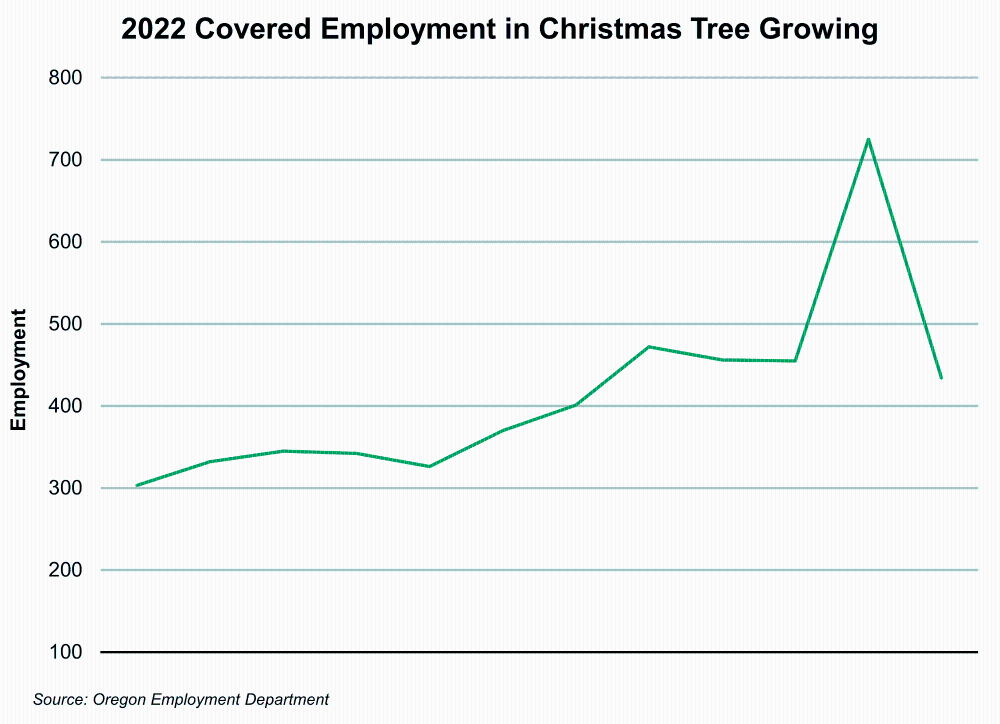Oregon Christmas Trees Create Jobs During the Holiday Season
December 11, 2023‘Tis the season when Oregonians will shop at stores and on the internet, bake cookies, and buy or cut a Christmas tree grown in their home state. In fact, across the U.S. and Mexico, people will be purchasing a tree grown in Oregon, helping to create jobs.
An Ancient Tradition
According to Encyclopedia Britannica, the use of evergreen trees, wreaths and garlands to symbolize eternal life was a custom of the ancient Egyptians, Chinese, and Hebrews. Tree worship was common among pagan Europeans such as the Vikings and Saxons. These traditions survived their conversion to Christianity in the Scandinavian tradition of decorating the house and barn with evergreens at the New Year and of setting up a tree for the birds at Christmastime. The pagan customs also survived in Germany by placing a Yule tree at the entrance or inside the house during midwinter holidays.
The modern Christmas tree is often traced to the “tree of paradise” used in a medieval European play about Adam and Eve given on December 24th. These trees were decorated with apples to represent forbidden fruit and wafers that represent redemption. By the renaissance, the apples were replaced by red balls and the wafers were replaced by various cookies. Lights in the form of candles were added in 16th century Germany. The Christmas tree tradition in the U.S. is attributed to early German immigrants.
An Important Commodity in Oregon
Oregon is the number one Christmas tree producing state in the nation, according to data from the Oregon Department of Agriculture, with roughly $106.9 million in sales in 2020. There were 3.4 million trees harvested and sold in 2020. Most of the trees sold were either Noble fir (49%) or Douglas fir (41%).
About 92% of Pacific Northwest Christmas trees were exported out of the region with 45% headed to California and 16% headed to Mexico. The balance were sent to other regions of the U.S, especially the Southwest states.
Employment
A lot of work goes into getting Oregon Christmas trees to market as fresh and green as possible. It starts with growing the trees, which will take at least six years for a tree to reach six feet tall, depending on the species. Then there are wholesale sales followed by a tight harvest window. Harvest is usually done with a chain saw for wholesale trees. Fresh cut trees are shaken, baled and then hauled out of the fields by trucks or helicopters. Finally, there is transportation to market and retail sales.
However, counting employment in Oregon’s Christmas tree industry is difficult since the production and selling are included in several broad industries with other commodities. These include the following:
- Nursery and tree production – comprises companies engaged in nursery stock, shrubbery, bulbs, and woody trees with a growth and harvest cycle of 10 years or less.
- Other miscellaneous nondurable goods merchant wholesalers – comprises companies involved in merchant wholesale distribution of nondurable goods from agricultural products to pet supplies to textile bags.
- Other direct selling establishments – comprises establishments engaged in nonstore retail sales by means such as in-house sales, truck or wagon sales, and portable stalls.
Since Christmas tree growers are required to have a license from the Oregon Department of Agriculture, we can get a rough idea of the magnitude of the industry. There were 330 licensed Christmas tree growers in Oregon in 2022, cultivating roughly 31,000 acres.
We can look at an annual trend of payroll employment in Christmas tree growing by matching company names from ODA licenses with records from the Oregon Employment Department’s Unemployment Insurance program. A search produced 58 matches.
In 2022, payroll employment at these companies held steady in the spring and summer and then spiked with the harvest in November at little over 700 workers. Annual average payroll employment was 413 with a total payroll of $17.6 million. Despite the seasonal nature of employment, annual average pay reached $42,546.

In addition, many growers are sole proprietors or family farms that have little or no payroll employment and are not required to report to the UI program. Many of the growers tend the trees and then hire temporary workers for the harvest or contract out the harvest. With more than 270 growers not included in the payroll employment companies above, it is likely that hundreds, if not thousands more are employed growing and harvesting Christmas trees over the year.
So, while you are decorating your tree, baking cookies, or enjoying an eggnog this holiday season, remember the thousands of workers that hustle to get that Oregon Christmas tree to you as fresh and green as possible.